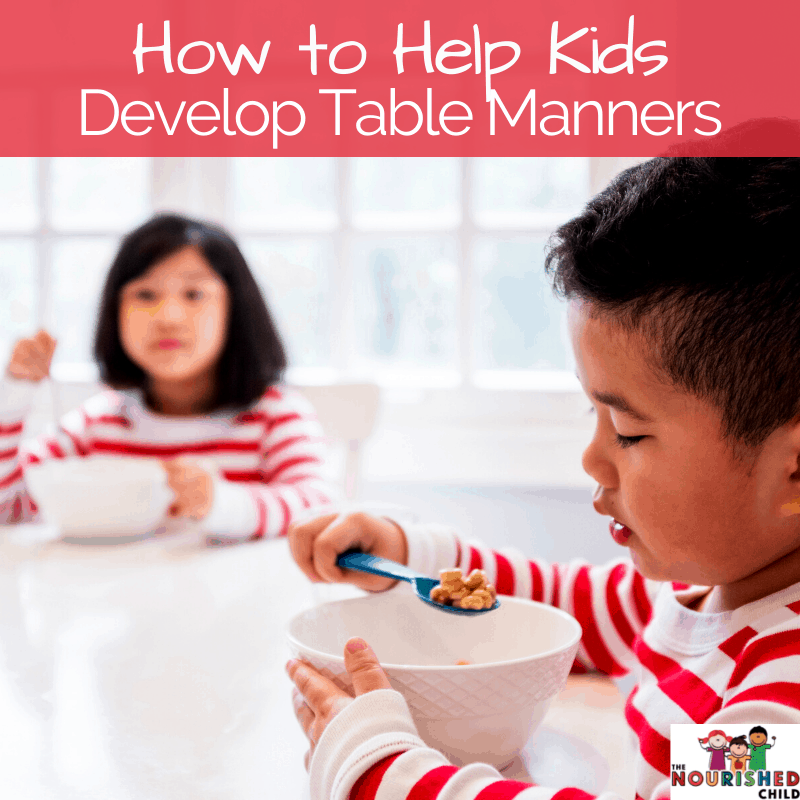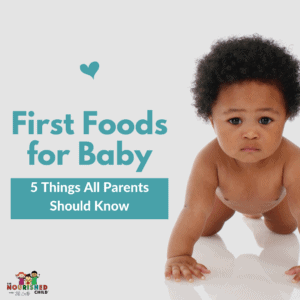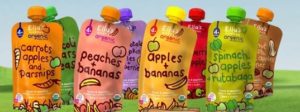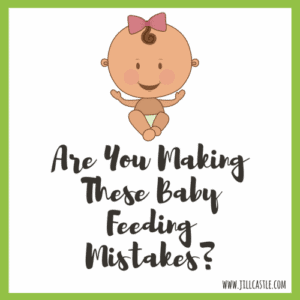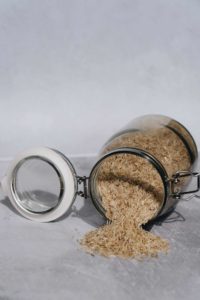How to Introduce Allergens to Baby
September 16, 2022
Introducing allergens to your baby can be a scary time. Thoughts of rashes and trouble breathing can be so intimidating that you may want to avoid it for fear of an allergic reaction.
Ironically, the foods that may cause a food allergy are the ones you actually want to introduce early.
In this article, you’ll learn about introducing allergens to baby, including when, what foods to use and why it’s important to do so on time.
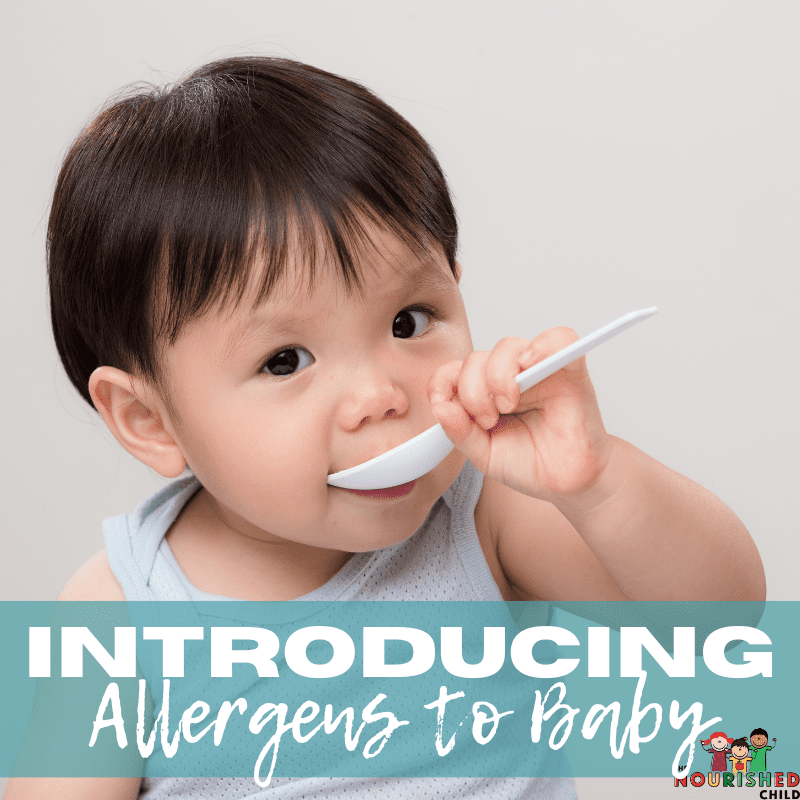
When Can Babies be Introduced to Food Allergens?
Babies can start solids around six months of age. Typically, you’ll start with pureed food on a spoon, whole foods using the baby led weaning method so baby self feeds, or a combination of both.
In the newest Dietary Guidelines for Americans (DGA), it’s advised that parents and caretakers introduce food allergens after 6 months of age and by the end of the first year.
This guideline is based on two big studies that were done in children, one called the LEAP study, and the other one called the Eat study.
The LEAP study gave peanuts to young children and found that children who had early exposure to peanut within the first year of life demonstrated a lower tendency for developing an allergy to them later in life.
Similar results were found in the Eat study. Babies who were exposed to peanut and egg had a significantly lower incidence of developing food allergies to them later on in life.
In the Eat study, however, they also exposed infants to milk, wheat and soy, but didn’t find a significantly lowered incidence of food allergy to them.
These studies tell us that exposing the immune system early in life helps build up a tolerance to some of the allergic proteins, or allergens, in foods like peanut and egg which will protect children later on.
How to Offer Common Food Allergens for Children
What are the common food allergens for your little one? They are: Milk, egg, soy, tree nut, peanut, fish, shellfish, sesame, and wheat.
Let’s go through some of the considerations for introducing these items to your baby during their first year.
Milk and Milk Products
Yogurt, cottage cheese, other cheeses, and milk in baked foods like muffins or pancakes can be introduced between 6 months and 1 year based on your baby’s eating skills and abilities.
Do not offer fluid milk to children younger than a year as the digestive system isn’t mature enough to handle it.
Soy Foods
Tofu, tempeh and other forms of soy are encouraged in the first year also. Tofu mashed up with some other vegetables, or served diced, or in chunks, lets your baby pick it up with their fingers. Softer tofu is easier for babies to eat than the firmer versions.
Avoid soy milk until your baby is a year of age. This recommendation exists because breastmilk or infant formula should be the primary beverage for infants in the first year of life.
Regular soy milk is too high in protein and other nutrients for the infant digestive system.
Related: What’s the Best Milk for Children?
Egg
You can offer cooked egg in the first year of life. If you’re feeling nervous about this, you can start with cooked egg yolk (the yellow part of the egg), and gradually work up to the whole egg.
Mash cooked egg yolk or whole egg with breast milk or infant formula to form a puree, or mix it with infant cereal.
Egg included in products that are already cooked, like a pancake or a muffin, is a great way to introduce eggs. Older infant eaters can eat scrambled eggs with their fingers.
Read more about Egg Allergy in Kids.
Fish and Shellfish
Cooked tuna fish, salmon, shrimp, and other delicious types of seafood can be introduced in the first year of life. If your baby is eating off the spoon, you can puree fish and shellfish with other foods.
For instance, puree tuna fish with potato to make a puree. Try poached salmon or cod, or tuna fish mashed with some mayonnaise to make a tuna fish salad.
You can always wait until your baby is self-feeding and introduce whole, cooked pieces of tuna, salmon, cod, or other fish or seafood.
Read: 5 Tips to Get Kids to Eat More Fish
Peanut and Tree Nuts
Peanuts, other nuts like cashew and almond, and even nut butters may be a choking hazard when babies are young and learning to eat.
Instead of offering the whole nut or a thick glob of nut butter, you can use a powdered form and mix it into other foods, or simply use a small amount of peanut butter or nut butter and mix it into baby cereal, formula or breastmilk, or swipe very thin amounts on bread, toast or crackers.
Read more about Introducing Peanut Butter to Babies.
Wheat
Wheat is found in many foods, including cereals, pastas, bread, crackers, and anything made with flour like muffins, pancakes, waffles, and French toast.
Often, babies just naturally get introduced to wheat as they are moving through the different stages of starting solids.
More Tips for Introducing Allergens to Baby
Generally, when starting solids, I advise beginning with low allergen foods like vegetables, fruits and meats to allow your baby to get the hang of eating.
Once your baby has gone through a couple of new foods, is tolerating them well, that’s when you can start introducing allergens to baby.
When you’re introducing the common food allergens to your baby, here are a few more things to consider:
Do It at Home
Introduce new foods to your baby at home. Don’t do it at daycare, or when you’re out at a restaurant, on a play date, or outside at a park.
You want to be in a safe environment so you can watch to see if there is an allergic reaction.
A Family History of Food Allergy
If there’s a family history of food allergies, such as another child in the family who has a food allergy, a spouse, or a close relative with a lot of food allergies, and you’re nervous about starting solids and introducing food allergens to baby, talk with your pediatrician.
Sit down and say, “I’ve got a family history of food allergies.” Your pediatrician might say, “Okay, let’s introduce this food in my office.” Or, “Let’s run a few tests before we do this.”
Collaborate with your healthcare provider so you feel more comfortable about your child’s safety.
If your baby does not have a significant family history, the recommendation is to go ahead and introduce food allergens in the first year.
Want More Help with Starting Solids?
I wrote a book called The Smart Moms Guide to Starting Solids. It goes through everything you need to know about choking hazards, food allergens and the milestones to hit by the time your baby is a year of age. Check it out! And be sure to check out my Ultimate Guide to Baby’s Nutrition in the First Year!

